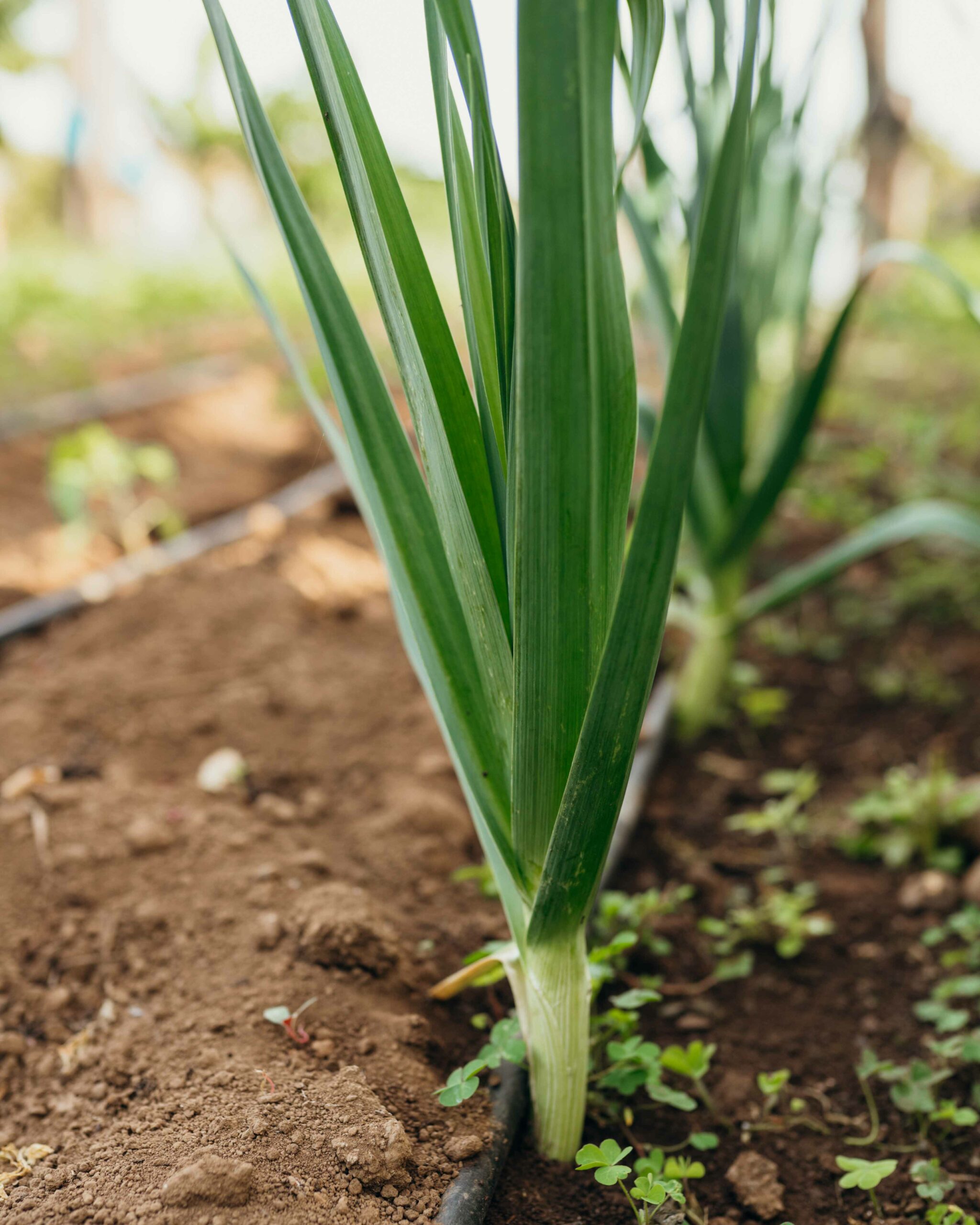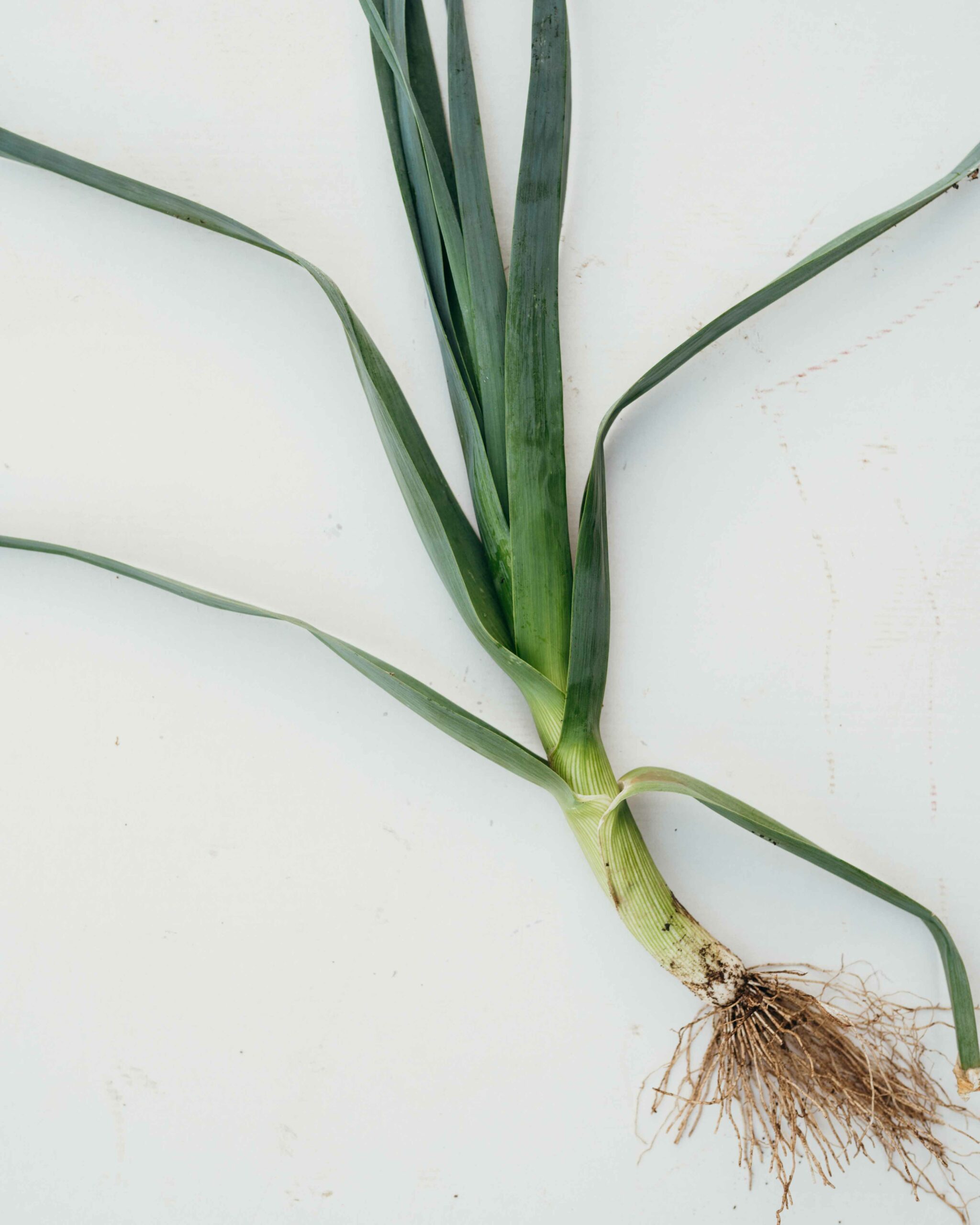Allium porrum
Porree, Lauch
Englische Bezeichnung: Leek
Spanische Bezeichnung: Puerro
Familie
Zwiebelgewächse (Allioideae)
Verwendbare Teile
Blattstiel
Hauptbestandteile
-
Mineralstoffe: Calcium, Eisen, Kalium, Magnesium
-
Vitamine: C, E, Folsäure, Beta-Carotin (Provitamin A)
-
Sekündäre Pflanzenstoffe: schwefelhaltige Aminosäure: Alliin (natürliches Antibiotikum)
Ernte-Hinweise:
Wenn die Stange dick genug ist und einen Mindestdurchmesser von 3 cm hat, kann der Porree geerntet werden. Dafür die Erde entlang der Reihe etwas lockern und die Pflanzen vorsichtig heraus ziehen
Verwendung:
Kochen, Dünsten, Schmoren, Blanchieren, Brate
-
z.B.: als Gemüsebeilage oder als Hauptzutat in Suppen, Soßen, Quiches, Eintöpfen und Aufläufen
-
Der Lauch/ Porree zählt wie Zwiebel und Knoblauch zur Familie der Zwiebelgewächse, schmeckt aber viel milder als seine scharfen Verwandten. Seit mindestens 4000 Jahren wird er als Gemüse- und Gewürzpflanze kultiviert und war früher auch eine anerkannte Heilpflanze.
Family
Onion Family (Allioideae)
Parts Used:
Bundle of leaf sheaths; stem/ stalk
Key Constituents:
-
Minerals: Calcium, iron, potassium, magnesium
-
Vitamins: C, E, folic acid, beta-carotene (provitamin A),
-
Secundary plant substances: sulfur-containing amino acid: alliin (natural antibiotic)
Harvesting Guidelines:
When the stem is thick enough and has a minimum diameter of 3 cm, the leek can be harvested. To do this, slightly loosen the soil along the row and carefully pull out the plant.
Use:
Cooking, stewing, braising, blanching, roasting
- e.g.:as a vegetable garnish or as main ingredient in soups, sauces, quiches, stews and casseroles
Like onions and garlic, leeks belong to the onion family, but they taste much milder than their pungent relatives. It has been cultivated as a vegetable and spice plant for at least 4,000 years and was once also a recognized medicinal plant.
Familia
Allioideae
Partes aprovechables:
Tallo
Principales Constituyentes:
-
Minerales: calcio, hierro, potasio, magnesio
-
Vitaminas: C, E, ácido fólico, beta-caroteno (provitamina A)
-
Sustancias vegetales secundarias: Aminoácido que contiene azufre: aliina (antibiótico natural).
Indicaciones de Cosecha:
Cuando el tallo es lo suficientemente grueso y tiene un diámetro mínimo de 3 cm, se puede cosechar el puerro. Para ello, afloja un poco la tierra a lo largo de la hilera y arranca las plantas con cuidado.
Uso:
hervir, guisar, estofar, escaldar, freír.
- por ejemplo: como guarnición de verduras o como ingrediente principal de sopas, salsas, quiches, guisos y tofados.
Al igual que las cebollas y los ajos, los puerros pertenecen a la familia de las cebollas, pero su sabor es mucho más suave que el de sus parientes picantes. Se cultiva como verdura y especia desde hace al menos 4.000 años y solía ser una planta medicinal reconocida.








































